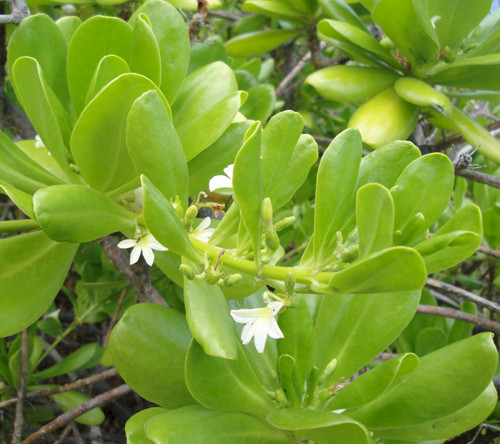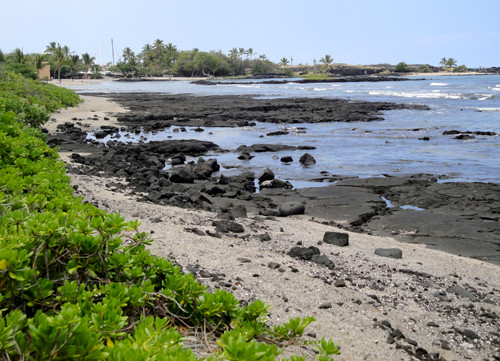Applying old wisdoms to new environmental challenges: cultural knowledge and modern management
Joanna Woerner ·Stepping out between two patches of naupaka—a Hawaiian coastal shrub with a blossom that looks like it has been cut in half—we see the sharp angles of black lava rock breaking the surface of turquoise water and the regal posts of a heiau (place for ceremonial rituals) climbing into the sky. Our quest to explore how traditional knowledge can help us address modern ecological issues has brought us here, to the reconstructed ʻAiʻōpio fishtrap at Kaloko-Honokōhau National Historical Park.

This National Historical Park strives to preserve the coastal sections of two ahupuaʻa—traditional land divisions in Hawaiʻi that often stretched from the coast to the sky. Each ahupuaʻa contained the natural resources Hawaiians needed to survive: water for drinking, bathing, and farming; plants for food, housing, and boats; and animals for food. However, ahupuaʻa is more then a way to divide resources; it's also a way to plan for the future and practice sustainable management. Careful observation of changes in fish population or plant abundance allowed the ancient Hawaiians to manage resources and place a kapu (taboo) on organisms when it was not a good time to harvest them. These short-term taboos or bans meant that natural resources would be available for the future.

In the past, the question guiding the management of ahupuaʻa was 'How do we use resources so there is enough for today and for the future?' Today, the question driving management remains much the same. More specifically, within the context of climate change, how do we live comfortably while reducing greenhouse gas emissions? Again, we can turn to traditional knowledge to help us communicate how what we do on land and what we emit into the sky are connected to the sea. We hope to incorporate these concepts in the corals and climate change module we are developing with COSEE Coastal Trends and the National Park Service Pacific Island Network Inventory and Monitoring Program. We are going to use cultural and ecological connections to describe why corals are important and how we can ensure their health now and into the future.

